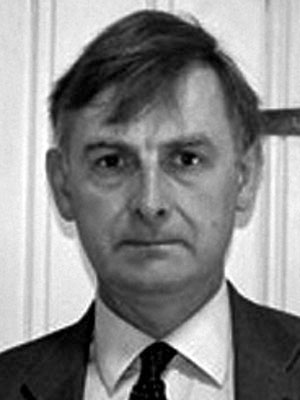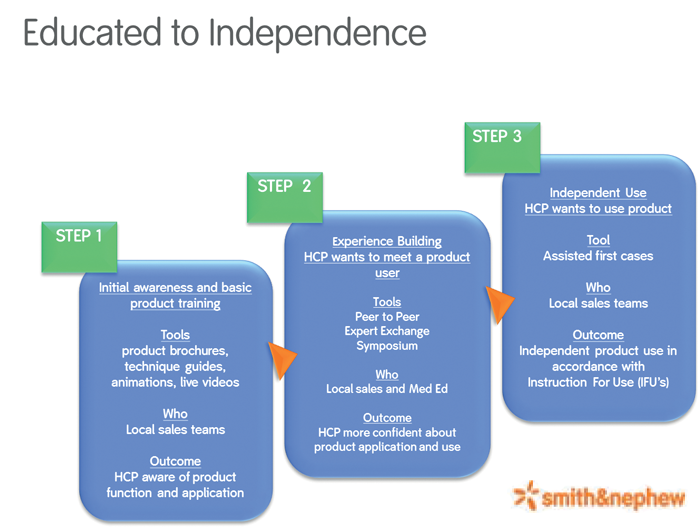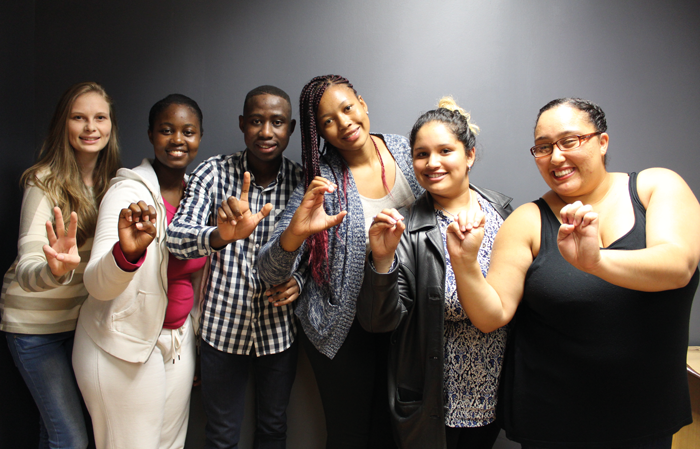It is said that surgical training has suffered as a result of a combination of factors – through the introduction of work time restrictions such as the European Working Time Directive (EWTD) [1], a limit on the number of years spent in surgical training with a clearly defined end point marked by the Certificate of Completion of Training (CCT) [2, 3], increased scrutiny of quality of patient care with demands for a consultant delivered health service and financial and efficiency drivers, making maximising throughput of the operating theatre a goal in itself, leaving far less time for training [4, 5].
Although workplace based learning is likely to always remain central to post-graduate surgical education, simulation has been suggested as a potential solution to some of these current challenges [6]. It has been proposed that if the early part of the learning curve could happen away from the work environment, for example in a simulated theatre, using models, trainees could learn their craft skills without being shackled by patient safety concerns, efficiency issues and the constraints of the EWTD [7].
Learning of isolated technical skills away from the workplace is a widely used and accepted technique – simple simulators such as knot tying jigs are frequently used on basic surgical skills courses, use of cadaveric animal materials such as the sheep larynx enable practising of emergency cricothyroidotomy during the Advanced Trauma Life Support (ATLS) course, and human materials such as temporal bones are used in licensed labs to gain drilling skills to perfect access to the middle ear.
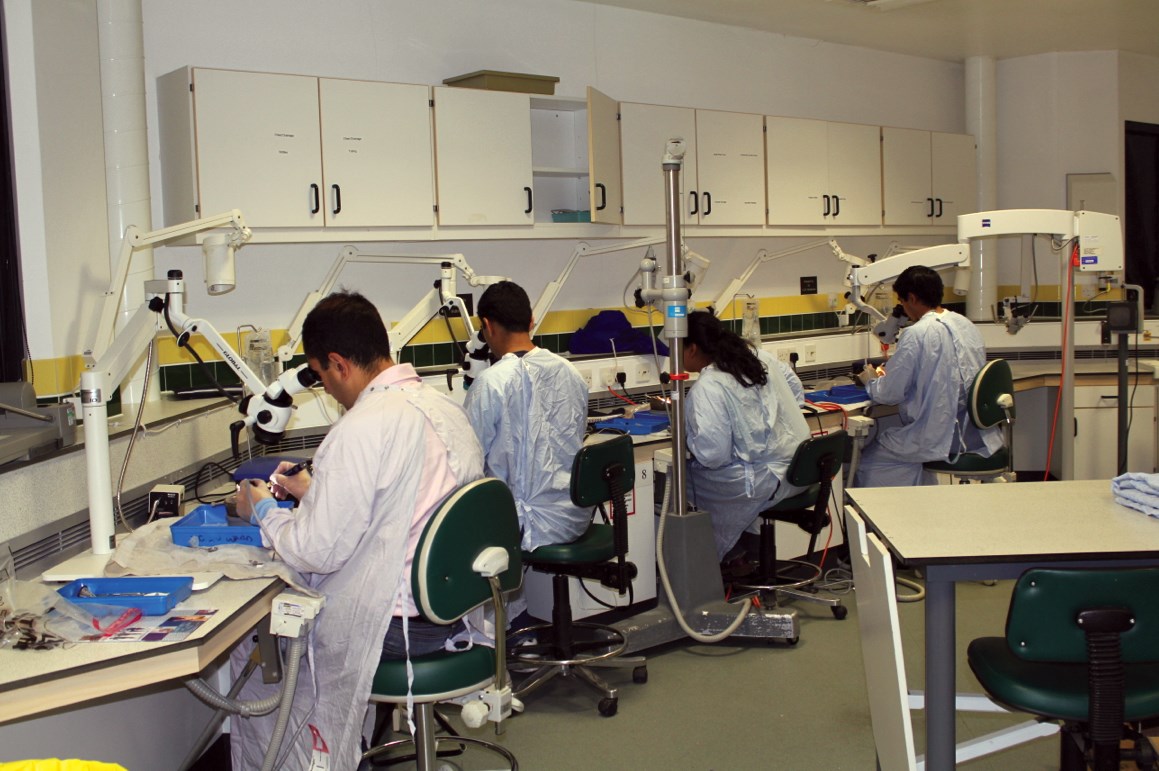
Technical skills work during a temporal bone course.
There are now a number of studies that that have found that isolated technical skills learned in simulation transfer to the workplace [8], however technical skills learning may not be the only application of simulation as a learning technique in surgery.
The emergency physicians and anaesthetists use scenario work to practise crisis algorithms and protocols with their emergency teams, for example, to practise the management of acute anaphylaxis or ventricular fibrillation. This type of simulation may use a high-fidelity mannequin such as SimMan 3G with life-like transmitted pulses and respiratory sounds coupled with clinically appropriate and dynamically changing cardiovascular parameters on a simulated anaesthetic machine monitor. Some high fidelity mannequins are linked to the anaesthetic monitor but other simulations require faculty to control the output parameters shown on the monitor screen. In these ways, interventions on the mannequin (such as giving drugs or shocking the mannequin) lead to changes in the numeric cardio-respiratory parameters shown on the monitor. This allows a crisis scenario to be practised, after which de-briefing may take place, which may focus upon clinical treatment and concordance with the algorithm, or upon communication and teamwork skills. One of the aims of these scenarios is to make sure algorithms are automated so that actions become second nature to the learners in a real life crisis.
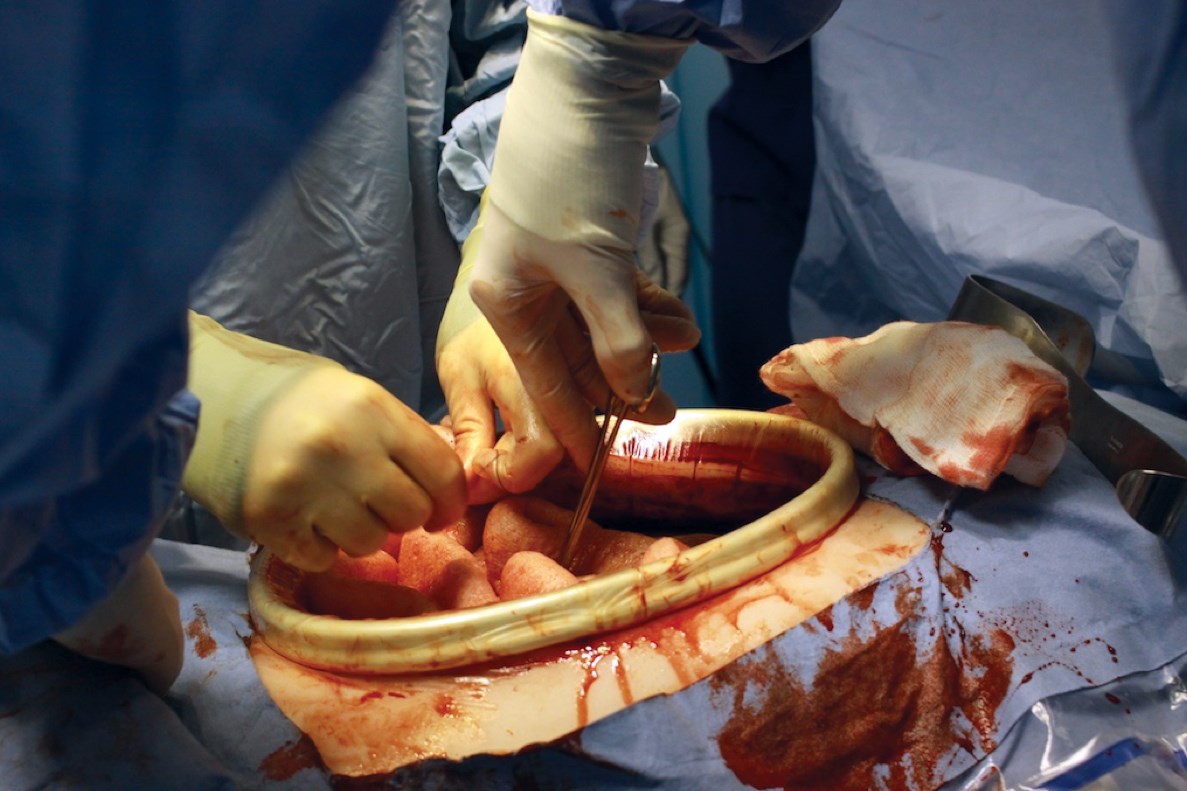
Bleeding laparotomy model – created by HealthCuts for Imperial College London.
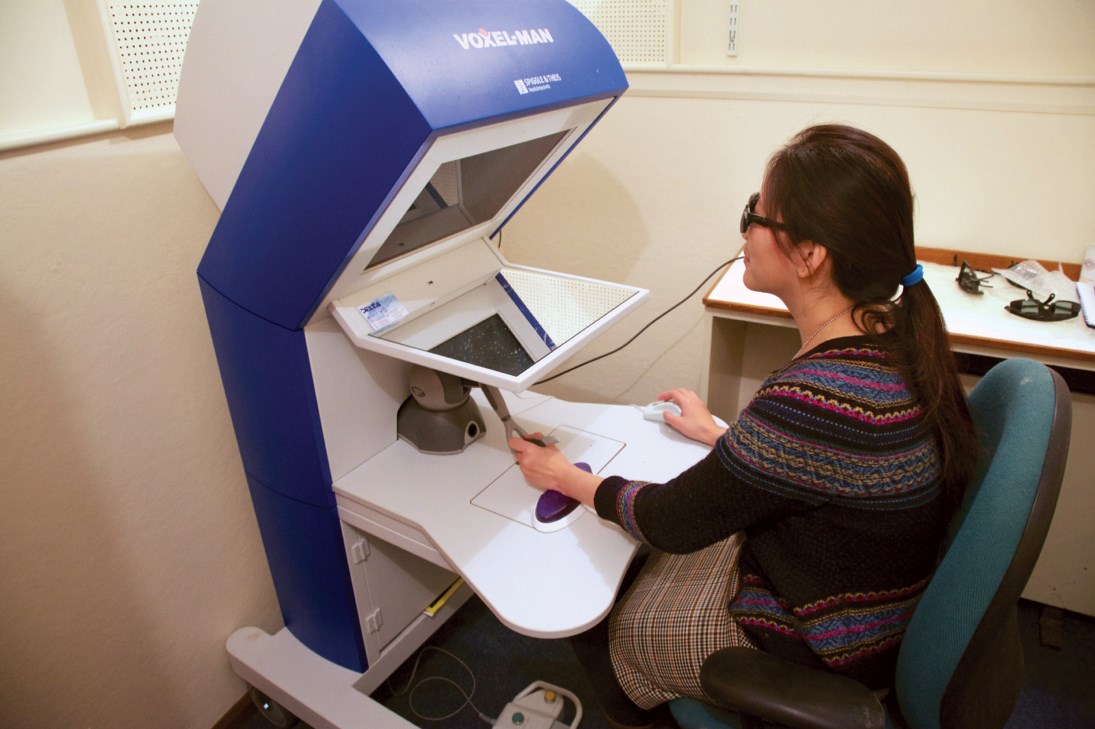
Virtual reality ENT technical skills simulation training.
High immersion crisis scenarios in open surgery may be more difficult to recreate, as the crisis and intervention itself occur within the operative field, e.g. bleeding needs to result in a change within the operative field, not necessarily a number or trace on a monitor. A high immersion crisis scenario in open surgery may require a high fidelity physical model capable of bleeding, and this type of model may be single use to allow simulation of ‘cutting’ and therefore expensive.
Laparoscopic and endoscopic surgical procedural simulation may lend itself better to simulation as the operative field may be viewed via a video monitor, opening up the potential for virtual reality operations to be practised. However, some of the cited limitations of these types of virtual reality platforms are the expense of the capital equipment as well as the fidelity of the haptics and visual cues portrayed.
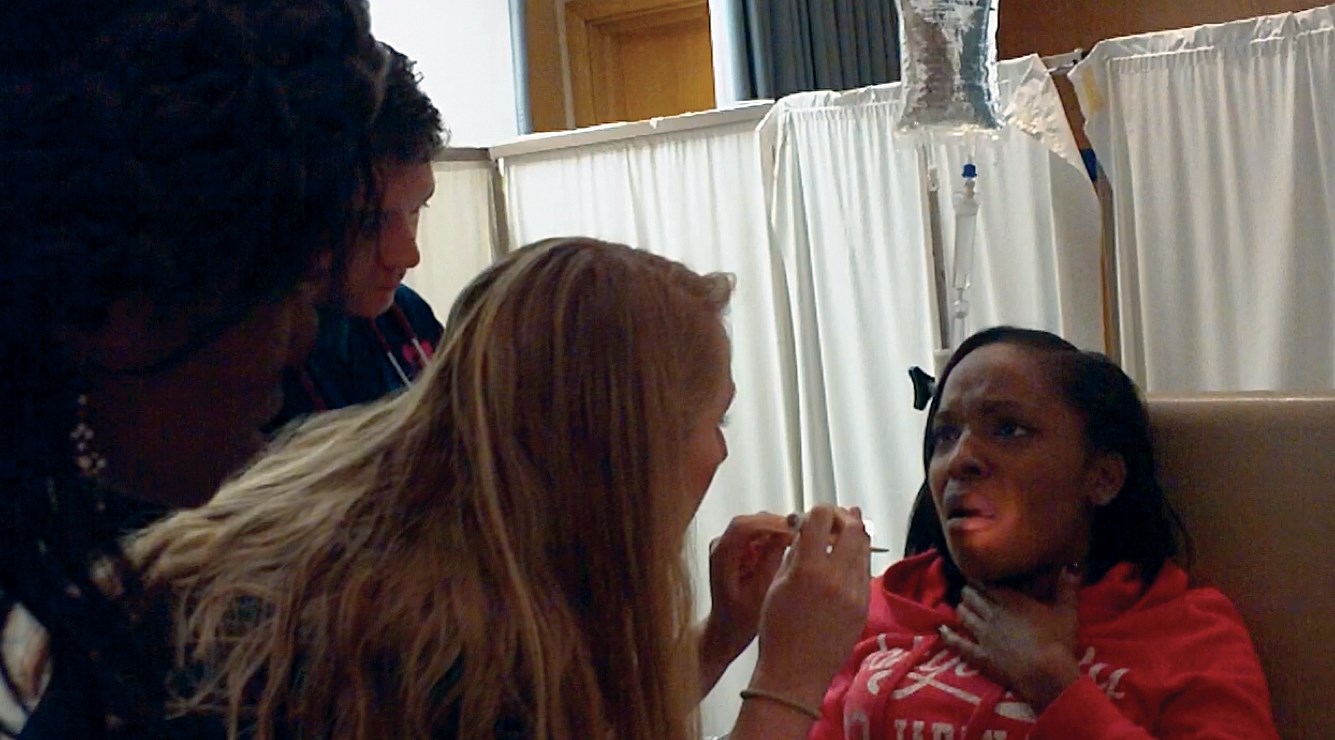
Post-tonsillectomy bleeding in a child using a simulated patient (actress).
A developing area in surgical simulation is the use of ‘ordinary’ rather than ‘crisis’ scenarios for surgical learners. The re-creation of everyday events, that may pose challenges for junior trainees, may facilitate reflection and conscious change in behaviours. It is possible to re-create a difficult consultation in the outpatients’ clinic; for example, discussion with a simulated patient about dysplasia is an example of a pathology that proves difficult for surgical trainees to explain in language understandable to a layperson.
Other scenarios can examine complex team-working and leadership skills in the Accident and Emergency department, for example during a trauma call. However, rather than the emphasis of such a scenario being upon learning the ATLS algorithm, the emphasis may be upon communication with the patient as well as with other health professionals such as the paramedic crew and radiographer. A simulated ward round may facilitate learning about prioritisation of tasks, time management and communication of the treatment plan to the nurse, as well as ensuring that appropriate documentation is made in patient notes. Theatre scenarios may be designed to highlight non-technical skills rather than to re-create the technical complexities of the surgical procedure. This may enable feedback on ‘soft’ skills such as management of resources, safety in the workplace, management of people, team working and communicating with colleagues.
In one such scenario the learner brief was for the core surgical trainee to make the appropriate preparations, including the World Health Organization (WHO) pre-op checklist, positioning and preparation of the patient including use of Bair Hugger, gel pads, Flo-tron boots as appropriate and prepping and draping for the specific surgical procedure in a simulated operating theatre. This scenario also prompted reflection upon when it might be best to return a patient to the ward, rather than proceed with the operation (appropriate imaging and limb marking not performed pre-op) as well as how to broach cancellation of the non-emergency procedure with the surgical team and patient.
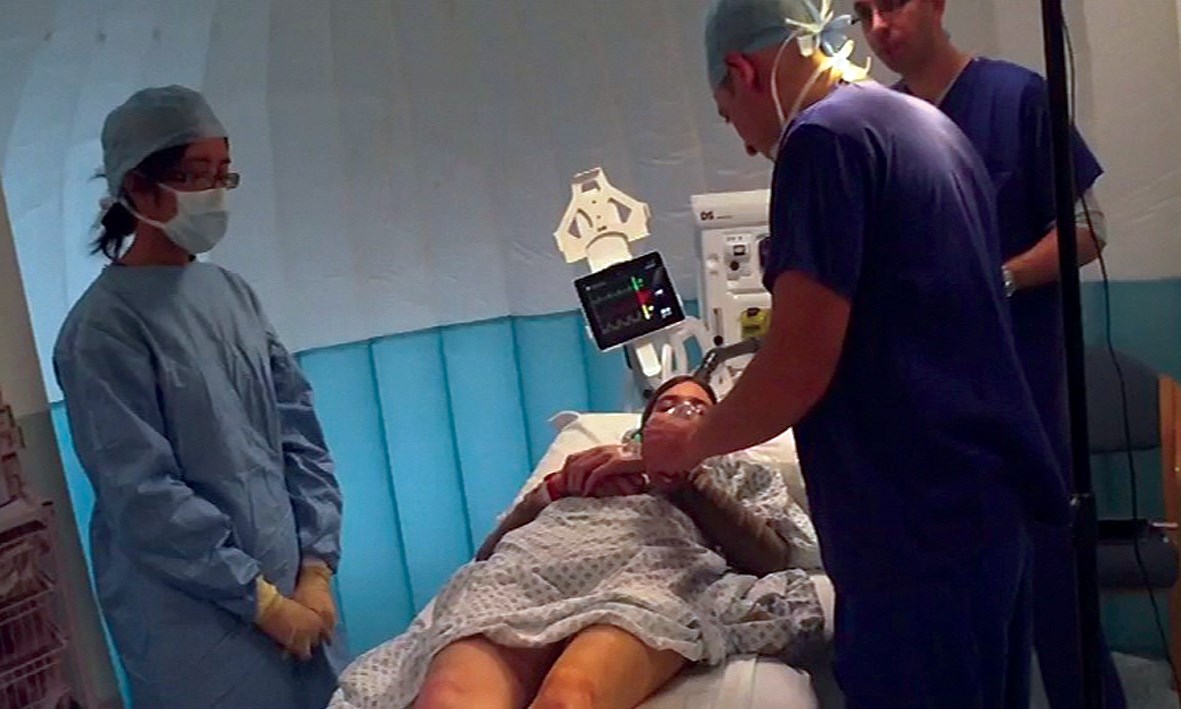
WHO check list scenario in a simulated operating theatre
(Distributed Simulation - Imperial College London) [9].
These types of surgical simulation scenarios may utilise hybrid simulation – the use of a simple simulator applied to an actor (a simulated patient) or within a realistic environment to re-create the technical task within the appropriate clinical context. A simple example to illustrate a hybrid simulation is that of skin suturing – the technical task itself involves placing two interrupted sutures into a skin pad however a challenging clinical scenario can be created using a simulated patient who may be uncooperative, drunk or needle-phobic.
Hybrid simulation holds much promise for surgical scenario work as technical and non-technical skills are not used in isolation in the clinical workplace, and segregating the teaching of these attributes into ‘surgical skills’ courses and ‘communication skills’ teaching falsely separates these domains.
This development from using scenario work only to rehearse and automate crisis algorithms towards the recreation of ‘ordinary’ scenarios illustrates a positive emerging trend from examining ‘what’ was done by the learner in terms of the clinical treatment that they provided, to a more holistic view of ‘how’ the clinical care was provided. If the quality and safety of the care we provide in our hospitals is to be improved, [10] it seems essential to value and promote these skills in our learners and surgical scenario based simulation may provide a platform for the development of these higher professional skills. Acknowledgement The authors would like to thank Prof Roger Kneebone (Imperial College London), Chris Burgess, Ali Qureishi and Peter Radford (Thames Valley Health Education) for their assistance with the simulation photographs.
References
1. Marron C, Byrnes CK, Kirk SJ. An EWTD-compliant shift rota decreases training opportunities. Ann Roy Coll Surg 2005;87(Supplement):246-8.
2. Calman K. Hospital Doctors: training for the future. The report of the working group on specialist medical training. London, Department of Health; 1993.
3. Chikwe J, de Souza AC, Pepper RJ. No time to train the surgeons. BMJ 2004;328(7437):418-9.
4. Crofts TJ, Griffiths J, Sharma M, Wygrala S, Aitken JR. Surgical training: an objective assessment of recent changes for a single health board. BMJ 1997;314(7084):891-5.
5. Bridges M, Diamond DL. The financial impact of teaching surgical residents in the operating room. Am J Surg 1999;177(1):28-32.
6. Kneebone R. Simulation in surgical training: educational issues and practical implications. Med Educ 2003;37(3):267-77.
7. Aggarwal R, Darzi A. From scalpel to simulator: a surgical journey. Surgery 2009;145(1):1-4.
8. Sturm LP, Windsor JA, Cosman PH, Cregan P, Hewett PJ, Maddern GJ. A systematic review of skills transfer after surgical simulation training. Ann Surg 2008;248(2):166-79.
9. Kneebone R, Arora S, King D, Bello F, Sevdalis N, Kassab E, Aggarwal R, Darzi A, Nestel D. Distributed simulation accessible immersive training. Med Teach 2010;32(1):65-70.
10. Care Quality Commission. The state of healthcare and adult social care in England. London, Department of Health; 2012-2013.
Declaration of Competing Interests: Alexandra Cope is employed by Health Education Thames Valley to provide surgical simulation based education for the core trainees. She sits on the School of Surgery board as the Simulation Fellow.
See also...
-
ENT trainees are fully registered doctors who have responsibilities to comply with the requirements...
-
Adequate training in novel medical devices is imperative, not only to ensure patient safety,...
-
There are many different ways to become an audiologist throughout the world and it...
-
In the “Just-so Stories”, the accomplished wordsmith Rudyard Kipling details how the leopard got...

